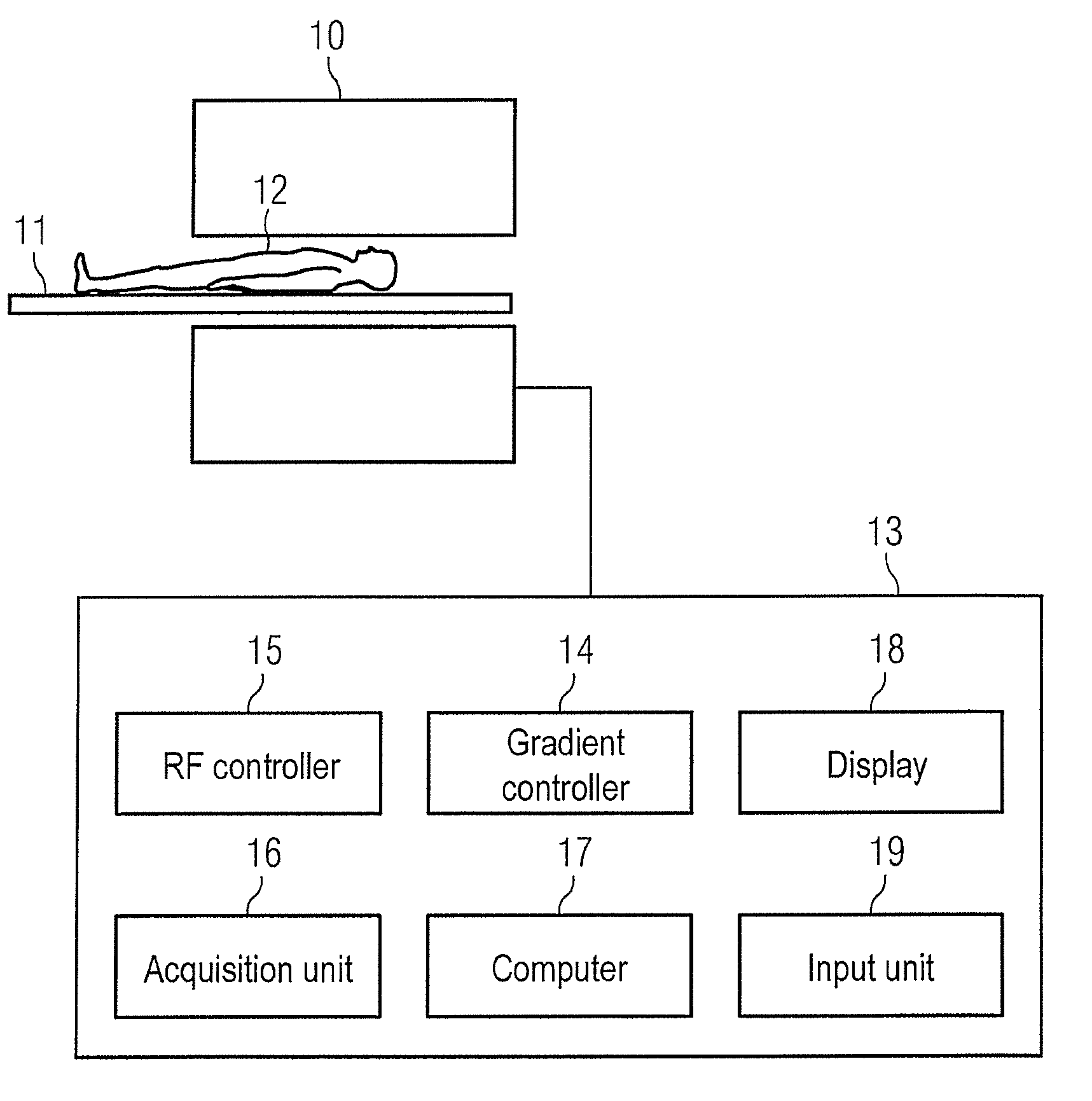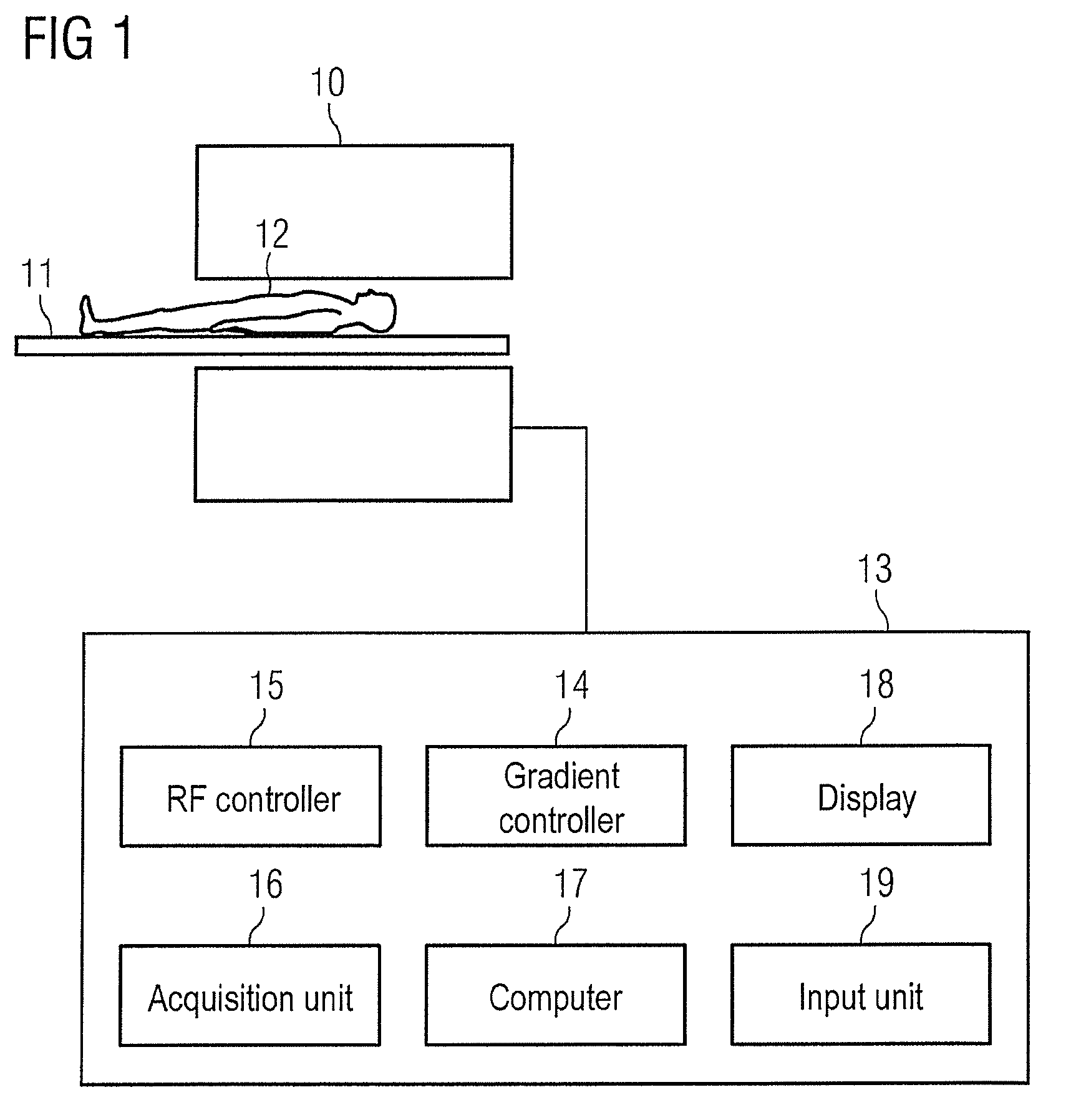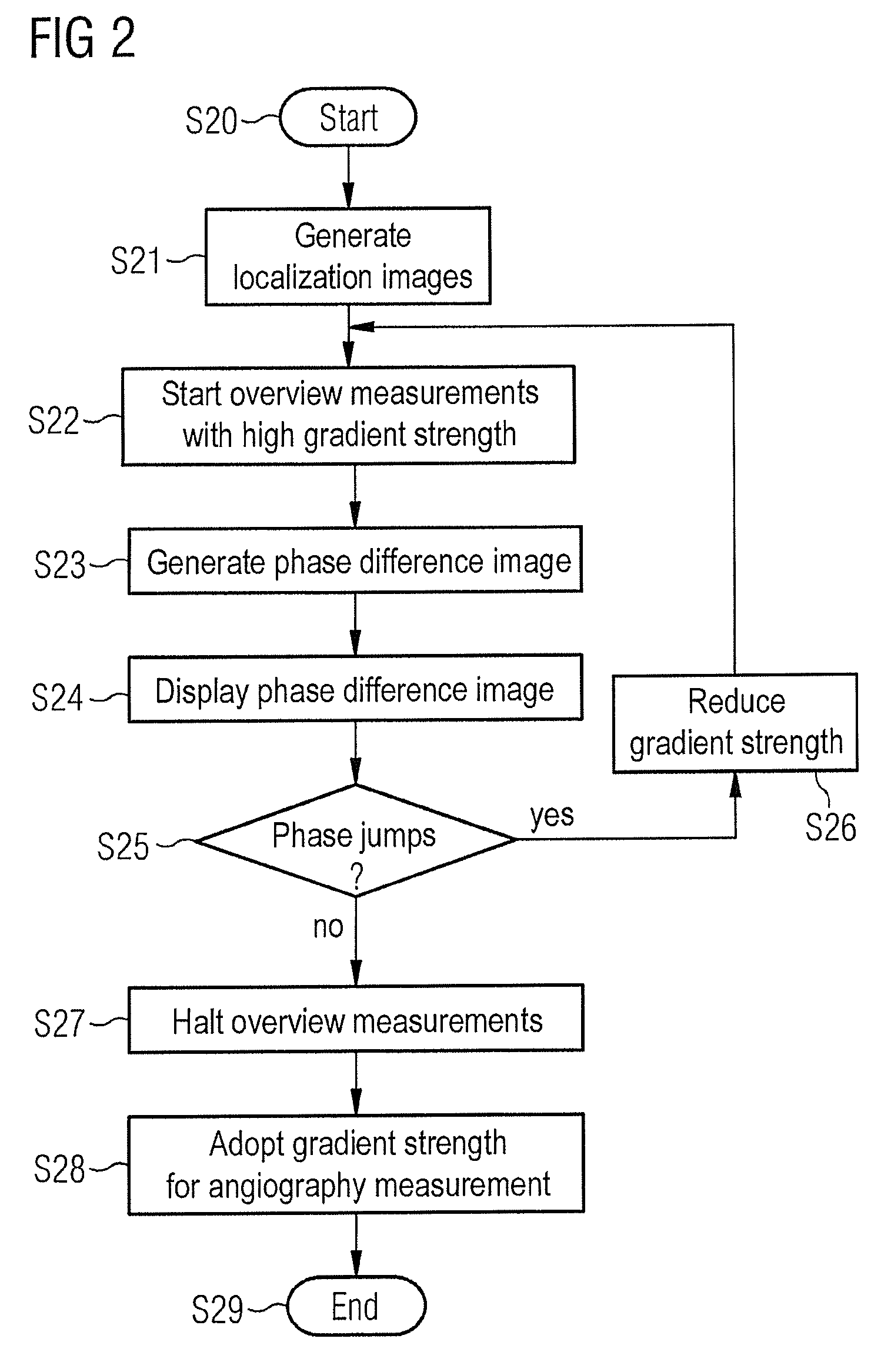Dynamic adaptation of a dephasing gradient pair
a dephasing gradient and dynamic adaptation technology, applied in the field of dynamic adaptation of dephasing gradient pairs, can solve the problem of few raw data projections, and achieve the effect of accelerating the search for the correct bipolar dephasing gradient pair
- Summary
- Abstract
- Description
- Claims
- Application Information
AI Technical Summary
Benefits of technology
Problems solved by technology
Method used
Image
Examples
Embodiment Construction
[0020]In FIG. 1, an MR system is shown with which a phase contrast angiography can be prepared effectively and quickly via determination of the correct bipolar dephasing gradient for coding the flow. The MR system has a magnet 10 to generate the polarization field B0. A person 12 to be examined, arranged on a bed 11, is driven into the magnet, and the voltages generated after radiation of RF pulses in connection with switched gradients are detected by a reception coil (not shown) and transferred to a central control unit 13. The central control unit 13 has a gradient controller 14 with which the magnetic field gradients that are necessary for spatial coding of the signals are controlled. An RF controller 15 controls the radiations of the RF fields to generate the MR signals by flipping the magnetization out of the steady state. An acquisition unit 16 controls the workflow of the gradient fields and the radiated RF pulses depending on the selected imaging sequence and thus controls t...
PUM
 Login to View More
Login to View More Abstract
Description
Claims
Application Information
 Login to View More
Login to View More - R&D
- Intellectual Property
- Life Sciences
- Materials
- Tech Scout
- Unparalleled Data Quality
- Higher Quality Content
- 60% Fewer Hallucinations
Browse by: Latest US Patents, China's latest patents, Technical Efficacy Thesaurus, Application Domain, Technology Topic, Popular Technical Reports.
© 2025 PatSnap. All rights reserved.Legal|Privacy policy|Modern Slavery Act Transparency Statement|Sitemap|About US| Contact US: help@patsnap.com



